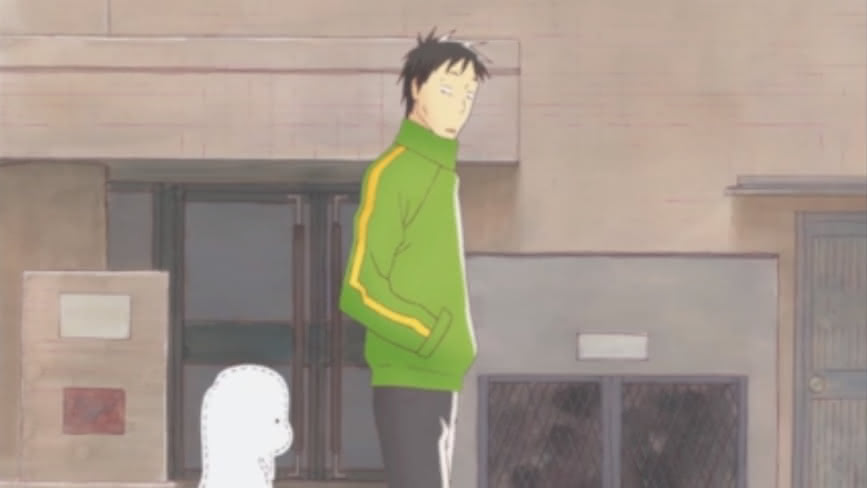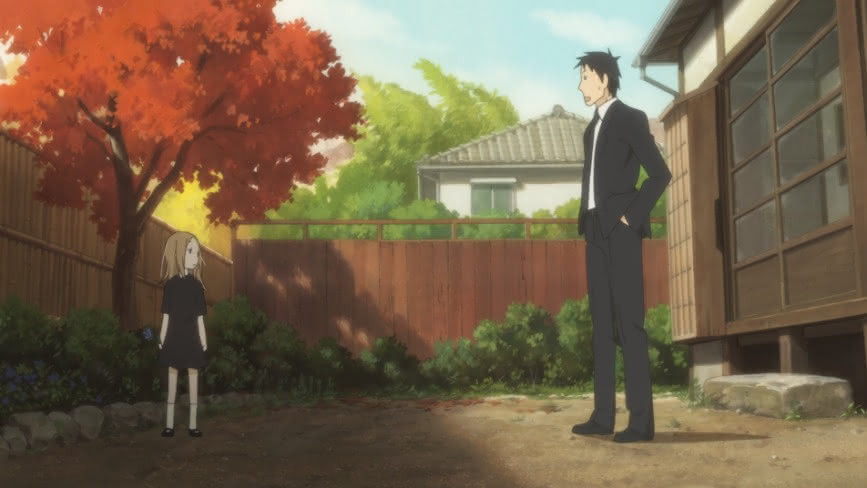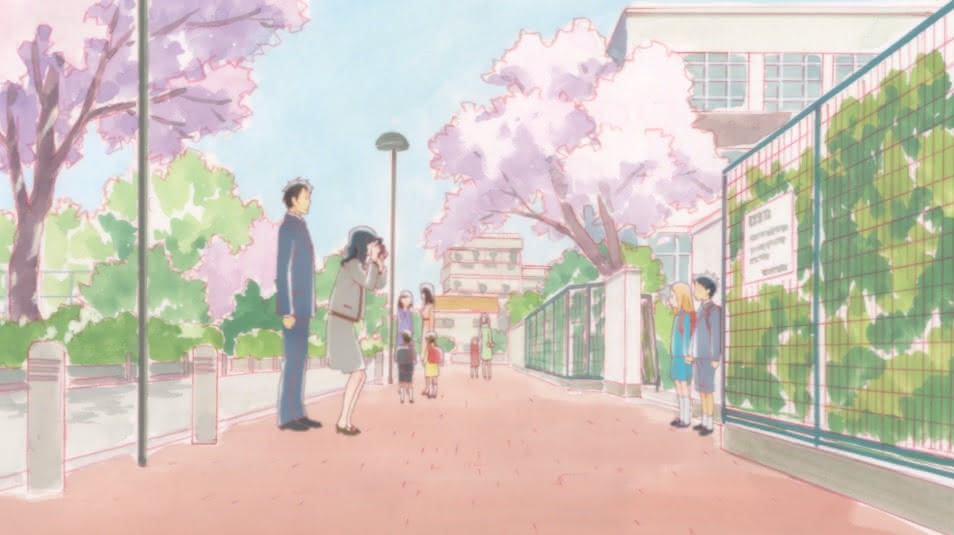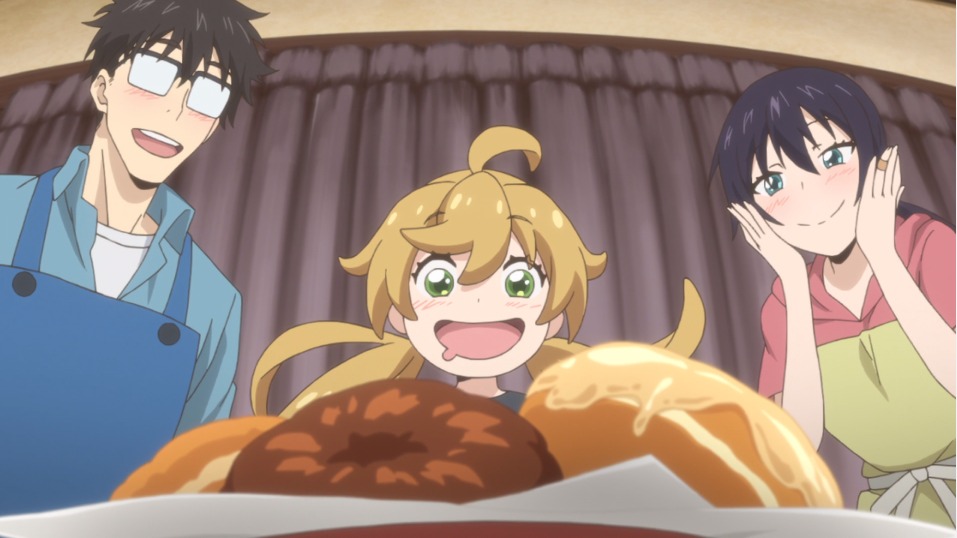After looking over my list of anime recommendations from 2011-2020, my friend had but one question. “Where is Usagi Drop?” Note the significance of his phrasing. He did not so much as ask me why I had chosen not to include it as he suggested that I must have forgotten to do so. I had recommended Usagi Drop to him years earlier, and he enjoyed it. Furthermore, he noted that my criteria for the list was anime for a broad audience, and he thought that Usagi Drop was an obvious choice.

I had not forgotten to add Usagi Drop. As I explained to him, “I decided that having to address the end of the manga would be too complicated.” In response, my friend stated that he had “completely blocked that from memory.”
What is Usagi Drop? Should the Usagi Drop anime have been on my list of anime recommendations? If so, what did “the end of the manga” have to do with its’ being excluded? Let us examine the Usagi Drop anime, “the end of the manga,” and whether the anime is nevertheless recommendable.
(For those who might not know – anime refers to Japanese animation whereas manga refers to Japanese comics.)
In addition to detailing the curious case of Usagi Drop, I will include an additional anime recommendation based on my discussion of Usagi Drop – Sweetness and Lighting.
The Usagi Drop Series
Usagi Drop started as a serialized manga (Japanese comics) series in 2005. The manga series was written by Yumi Unitia, and it ran from October 2005 to April 2011 and was subsequently published in 10 volumes. All 10 volumes were released in the United States in English from 2010-2014.
The first four volumes of the manga was adapted into an 11-episode anime that ran from July 7, 2011, to September 15, 2011. The anime was simulcast in the United States when it aired in Japan in 2011.
A Brief Usagi Drop Anime Synopsis
While I watched the Usagi Drop anime, I never read the manga. My frame of reference for all things Usagi Drop is the anime and what I have gleaned about the manga from other sources. Insofar as I understand, the anime adapted the first four volumes of the manga faithfully.
The protagonists of Usagi Drop are Daikichi Kawachi and Rin Kaga. Daikichi is a 30-year-old single man who works at a company and seems to have a good, solid job. Rin is a six-year old child who we are left to understand is the daughter of Daikichi’s late grandfather. The series picks up with Daikichi going to his grandfather’s funeral and finding Rin, who his family had not known about until Daikichi’s grandfather died.
The family was mortified that Daikichi’s grandfather had a daughter at his age, and they projected their feelings onto Rin. They treated her coldly at the funeral and talked about sending her to foster care. Unable to stand how his family was talking about a sweet young girl who had done nothing wrong, Daikichi decided to take her in and raise her himself. The Usagi Drop anime covers Daikichi’s struggling to raise a child. Along the way, Daikichi meets Rin’s mother, who is interested in Rin but does not want to meet her. Daikichi also befriends Yukari Nitani, a single mother around his age, and Rin befriends her son, Kouki.
Where Does the Usagi Drop Anime End and the Manga Continue?
The anime covers the period of about a year after Daikichi takes Rin in. Daikichi works to balance his job against the new demands of raising a child while Rin adjusts to her new life and begins school. We learn about Rin’s mother. Not much of consequence happens. It is a quaint snapshot of a year in the life of a new family. Rin loses her first tooth in the final episode of the anime, and life goes on. As far as viewers of the show are aware, there is no reason to doubt that Daikichi’s grandfather is Rin’s father.
So, what happened in the manga? Why was it that when the director of the Usagi Drop anime, Kanta Kamei, was asked how he felt about the manga’s ending, he responded:
I think it’s [] great that Daikichi and Rin are able to live happily together. But I still have some mixed feelings about it…
Kanta Kamei, the director of the Usagi Drop anime offering his thoughts on the ending of the Usagi Drop manga
That response sounds very diplomatic. Imagine if he had not just worked long and hard adapting the first half of the manga into an anime that he hoped people would watch. What happened?
The anime series ends at volume four out of ten of the manga. Starting in volume five, the Usagi Drop manga skips ahead 10 years. Volumes five through ten of the manga cover Rin’s life in high school. Toward the end of the manga, readers apparently learn that Daikichi’s grandfather was not Rin’s father. It was a ruse! Rin confesses her romantic feelings for Daikichi when she’s 16, and Daikichi tells her to wait until she is 18 to see if she feels the same way. Apparently the manga ends with her feeling the same way, and they decide to get married.
Come Again…?
One could say that the manga ends happily ever after. Alternatively, one might echo the anime’s director, Mr. Kamei, in expressing “some mixed feelings about it.” I take a slightly different track. Allow me to quote me:
Ick! What were you thinking, Ms. Utina?
Nicholas A. Ferrell on the ending of the Usagi Drop manga
Evidently, Ms. Unita thought that reassuring us that Daikichi and Rin were not actually related would make everything alright. Firstly, it certainly does not. Secondly, why would you do that to what had been a very realistic and, in a way, relatable story about trying to raise a young child as a single father in contemporary Japan? Forget about the strange ending – why did we need to skip ahead to high school at all? Why would you mess with a good thing? Was Ms. Unita that intent on steering it into a twisted love story? Did she need to serious and innocent start to lull readers into a false sense of security? Mr. Kamei wanted to know too!
I watched Usagi Drop as a simulcast in 2011. At that time, I knew there was some “controversy” with the manga, but I did not know what the controversy was about. I enjoyed the anime and was impressed by both its quality and interesting subject-matter. The anime itself offers no good reason to doubt that Daikichi’s grandfather is Rin’s father. Nor does it suggest the disordered path that Ms. Unita took the manga down in the end. The Usagi Drop anime series itself is thoughtful, and easy to watch and enjoy with no knowledge of the manga.
Was the Anime Team Aware of the Manga’s Ending?
Mr. Kamei stated that he opted to base the anime exclusively on the first four volumes of the manga because “[w]hen the anime was being produced, the original manga was not finished yet, so I thought it would not be possible to include parts past volume 4.” He added that because of the manga’s time-skip, “[t]he themes and points of view were completely different,” thus leading the team to only adapt the first part of the manga dealing with Rin’s childhood.
It is clear from this statement and from the timing of the manga’s release that the anime team began work on Usagi Drop before it could benefit from knowing how the manga ended. Something tells me, given Mr. Kamei’s admitted “mixed feelings” about the end of the manga, that the anime adaptation would have probably been limited to the first four volumes of the manga even if the manga had ended before work on the show began.
Bonus Anime Recommendations For 2011-2020: Usagi Drop and Sweetness and Lighting
My friend was right to initially be perplexed about why I did not include Usagi Drop on my list of recommended anime from 2011-2020. Had the manga not ended with Daikichi and Rin deciding to start a different kind of family together, I would have included it in my 10 main recommendations without doubt, likely in place of Fruits Basket. That is not a commentary on the relative merits of the two shows – I think that Fruits Basket is the better series of the two – but instead a nod to Usagi Drop’s potentially appealing to people who do not watch anime at all.
In the end, I almost included Usagi Drop even with the manga’s baggage, but opted not to. I decided that it would be better left for a separate post wherein I could more fully discuss the anime, the odd second half of the manga, and my views on whether the second half of the manga is severable from the anime.
Having written my full piece on Usagi Drop, I recommend it with all of the aforementioned qualifications as an anime series from 2011-2020 to consider watching. In addition, I also recommend Sweetness and Lighting, a lighter and culinary-focused take on the single father raising a daughter story, but with none of the baggage.
Usagi Drop

- 11 Episodes (July 7, 2011 – September 15, 2011)
- Available to watch on Crunchyroll
- Studio: Production I.G.
- Director: Kanta Kamei
- Source Material: Manga
Synopsis
I already provided the basic synopsis above. Episode 1 of Usagi Drop covers Daikichi’s grandfather’s funeral. There he meets Rin, takes her in, and the rest of the series covers the first year of their life.
Daikichi takes a demotion at work in order to have more time to care for Rin, finds Rin’s mother and learns why she does not want to be actively involved in Rin’s life, and meets Yukari Nitani, the single-mother of one of Rin’s friends in daycare. The show is told mostly from Daikichi’s perspective, but Rin is undoubtedly a co-main character.
Commentary

To start, this commentary will focus exclusively on the anime – I have said my piece on the manga.
Usagi Drop’s finest moment is its first episode, which is, off the top of my head at least, the best opening episode of any anime in the 2011-2020. The show quickly settles into a rhythm of covering little events in the life of Daikichi and Rin. Besides the charming scenes centered on their interactions, the most dramatic points in the show are Daikichi’s interactions with Rin’s mother and his decision to take a demotion at his job.
Daikichi has gaps in his knowledge, but he is a fundamentally good man. Mr. Kamei thought that he was perhaps too good: “The construction of Daikichi’s character is difficult because he is too good of a person.” Nevertheless, it works. Yukari Nitani is also a standout character.
Having noted the adults, Rin is the show’s stand out character. Sweet, precocious, and occasionally mischievous, she is one of the best-written small child characters in anime.
Some people, including my friend who liked Usagi Drop against all odds, demean any anime without action as being “slice of life.” I think that the term “slice of life” is overused to the point of rendering it meaningless. The label would apply to Usagi Drop, however. It is a show comprised entirely of small events, and nothing particularly dramatic happens. Usagi Drop begins with its most dramatic event, and then cruises toward a finale that is not much different than anything else that happens in the show.
I recommend Usagi Drop to those who find the premise interesting, but others who do not may find the series to be a bit of a drag.
(Additional Recommendation) Sweetness and Lightning

- 12 Episodes (July 4, 2016 – September 19, 2016)
- Available to watch on Crunchyroll
- Studio: TMS/3xCube
- Director: Tarou Iwasaki
- Source Material: Manga
Synopsis
The main protagonist of the show is Kōhei Inuzaka, a high school teacher and the single father of Tsumugi Inuzaka, a kindergartner. Kōhei’s wife died six months before the events of the show. In the first episode, Kōhei and Tsumugi have a chance encounter with Kotori Iida, a student at the high school where Kōhei teaches, unknown to him at the time. Kotori invited them to her family restaurant, but there inadvertently revealed that her cooking ability was limited. While Kotori’s mother is a celebrity chef and often away, Kotori’s fear of knives keeps her from enjoying cooking food as much as she enjoys eating it.
Kotori invites Kōhei and Tsumugi over to the restaurant to cook. Kōhei takes Kotori up on the invitation, and most of the episodes involve them cooking at the restaurant. Even the episodes that do not take place at the restaurant feature cooking. Kōhei gradually becomes a competent cook with Kotori’s help, while Kotori gets to make food without dealing with sharp objects. Kōhei becomes closer to Tsumugi. The normally brooding Kotori finds her slice of happiness.
Commentary
Sweetness and Lighting is easily the lowest stake show on my anime recommendations of the decade lists. It is charming, sweet, and has plenty of cooking. The most dramatic point in the show may be when Tsumugi is in a bad mood during one episode, as children her age sometimes are.
Kōhei is an all-around good guy, and Tsumugi is a well-portrayed child, sweet and endearing and not at all too mature for her age. Kotori is a pleasant character in her own right, but is less memorable than the Inuzakas. She is shy, lonely, and has a not-well-concealed innocent crush on Kōhei that he is fortunately unaware of. Later in the show, Kotori’s one friend from school joins in their culinary exploits, which is a nice change of pace in the latter episodes.
Bonus New Leaf Journal Recommendation
Both Usagi Drop and Sweetness and Lighting involve a single father (or guardian, in Usagi Drop’s case) taking care of a young girl. I wrote an earlier article about this theme in the Persona 4 Golden video game.